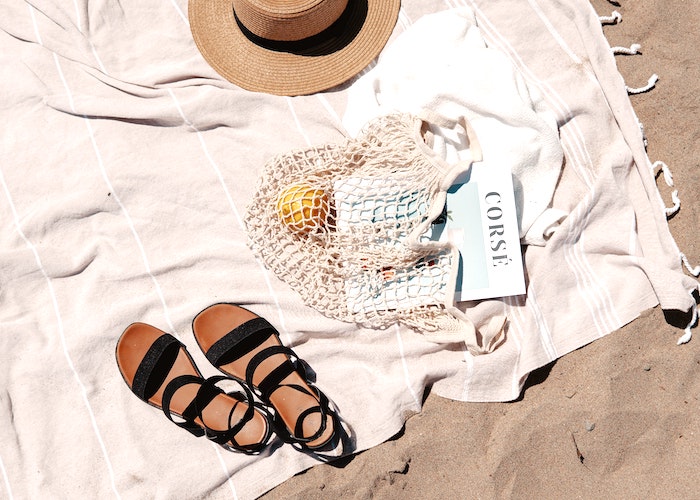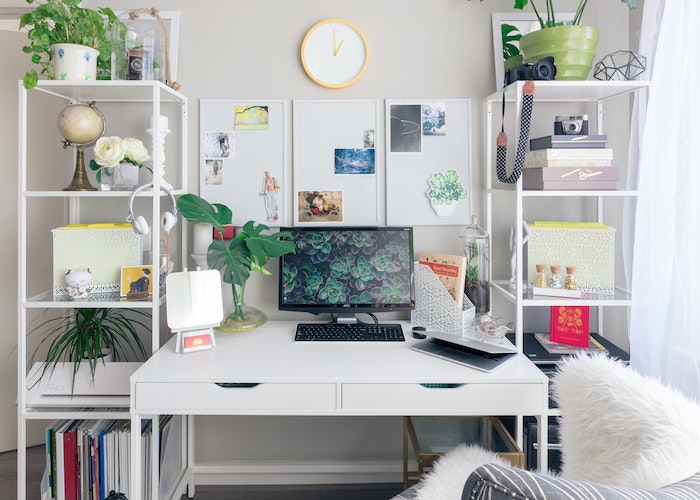The Only Spending Category I Budget For & How It Works For Me

If budgeting seems way too complicated for you, or it’s never worked, I want to tell you about my new, totally-simple budget. It’s legit one single number and the budget category name? “Fun.”
Let me explain a bit.
One of my perennial favorite posts has been my defense of a “fun” budget. When I wrote it, it was a reaction to a lot of “just deprive yourself of all joy!” style articles I had seen in the personal finance world, and it all seemed entirely unsustainable and crazy. Especially since duh, convincing yourself to not value the things you value is bananas, not to mention a horrible budgeting strategy. No matter what your financial goals are, you need to keep a bit of wiggle room in your budget for the stuff that makes your life enjoyable. That might be taking the occasional Uber, it might be lattes, it might be buying the organic apples. Whatever works for you.
But over the past eight months of home ownership (and real, true joint budgeting and joint account-having), the fun budget has slowly but surely become my favorite, and only, budget. It also happens to be the simplest budgeting I’ve ever done: it’s one category, and one number, and that’s all I need to worry about every month.
If you want to make a dead-simple budget:
- Plan out your monthly spending
- Plan out your savings
- Spend the rest
No? Too simple? Don’t worry. Here’s a breakdown of what those steps actually mean, and how you can tackle them yourself.
I still plan out my monthly spending
This is a little peek into how The Fiance and I are managing our money, but we split all of our “necessities” 50/50, and they come out of a joint account. To figure out how much we each needed to contribute to that account every month to make this work, we mapped out everything we need to pay for, and we update it based on new information when it comes around. This is everything from annual license plate renewals, to our car loan payments, to the mortgage, to the hydro bills. It’s also our shared fun spending, like lattes and going out to eat with friends.
We know how much we’re going to spend on those things, and we track that spending in a shared spreadsheet (and adjust accordingly as we learn more about our spending patterns). Once we’ve made our contributions to the joint account, we can rest easy knowing that our groceries, lightbulbs, cleaning supplies, and movie nights are handled.
I still plan out my savings
My joint account contributions aren’t the only thing that comes out of my account automatically when I get paid, though. On top of that, I’ve got automatic contributions to my retirement savings, my emergency fund, my wedding fund, and our house emergency fund. (After last year’s craziness, four savings goals seems like nothing.) I know how much I need to save for those goals monthly (other than retirement) based on how much I need to have saved, and when I need to save it by. Those amounts come straight out of my account and are non-negotiable in my monthly money plan.
But my personal “budget” is a single number
Based on all that work, I know that I have a simple budget of about $300 ($238 USD) a month (real numbers, because I know you were curious) to spend on whatever the h*ck I want. If I want to go out with friends, or buy a fancy pair of rain boots, or get eyelash extensions a la Mixed Up Money, I can do it.
When I hit that number, I have to stop, which is a good incentive to keep my spending reasonable and not buy a $300-anything on the first of the month. But it’s also a huge relief that I’m not trying to break my budget into $40 for “personal care” items like shampoo and $50 for “fitness” every month. It’s my spending money, and since everything else I need to handle is accounted for, it doesn’t need to be managed.
This only works if you do the work
The only caveat I can’t stress enough here is that this simple budgeting approach to my personal spending money only works if you’re really, truly prepared. You need to know for sure your essentials are covered, like your bills, and your food, and your irregular expenses. You need to know for sure that you’re saving up for retirement, for an emergency fund, and to cover any big upcoming needs and wants. And you need to know for sure that you have a system in place to stop spending when your money is gone for the month. (If you keep spending after you pass that fun number, you either need better systems, or this approach isn’t a solid one for you or your money.)
That’s why I still track my personal spending, albeit with a single category: “fun.” It helps me keep tabs on how much left I have in terms of wiggle room over the course of the month, and helps me make better decisions about how I want to spend that money to maximize for fun. Plus, I can always look back on that tracking spreadsheet at the end of the month and see how much fun I really got out of each purchase. Looking back on January, I can say for sure that I am happy about how I spent every dollar of my fun budget (there were a lot of books tbh) and I don’t regret a single purchase.
Desirae blogs about money at Half Banked, and spends altogether too much time on Twitter. She takes “money nerd,” “no chill” and “crazy dog lady” as compliments.
Image via Unsplash




